Table of Contents
Let’s be honest—if you’re using two monitors or multiple displays for hours every day, your neck, back, and eyes are probably paying the price. And while dual monitors can seriously boost productivity, they can also be a sneaky source of discomfort if not positioned properly.
That’s where ergonomic settings for dual monitors come in. Whether you work from home, game at your desk, or manage complex workflows, building a health-conscious setup for dual monitors can dramatically improve your daily comfort, posture, and energy levels.
This guide is tailored specifically for people who typically care about health and comfort—we’re talking reduced strain in the eyes, proper spinal alignment, and fewer headaches from awkward dual-monitor setups. We’ll walk through every aspect of an ergonomic dual monitor workstation, from screen placement at eye level to posture support, and give you the tools to create a dual monitor setup that’s easy on you.
Why Ergonomics Matters in a Dual Monitor Setup
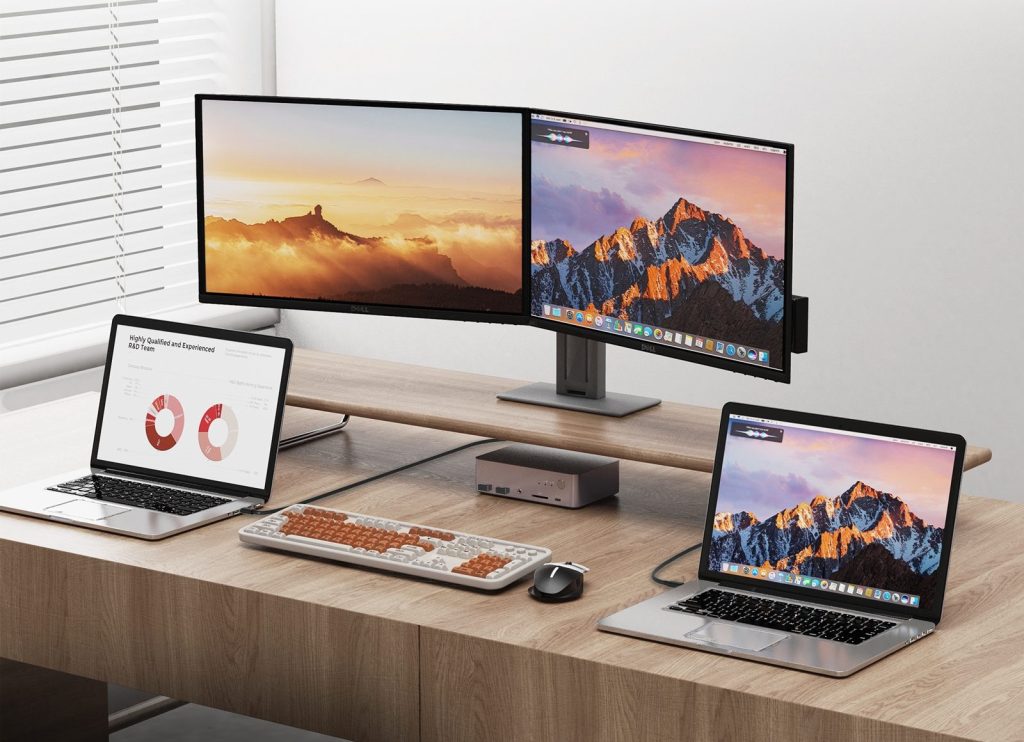
Before we dive into tips, let’s talk about why ergonomics for your dual monitors or computers should be at the heart of your setup, especially when using two screens instead of one.
Dual-monitor workstations require more movement than single-monitor display setups. Over time, that repeated motion—especially if your display screens are poorly aligned—can cause chronic neck and shoulder pain, back strain, and even tension headaches. If one display screen sits higher or farther away than the other, you will constantly have to compensate in ways that aren’t sustainable.
A well-designed ergonomic workspace aligns everything with your natural posture. It promotes neutral wrist positioning, even visual angles, and upright posture, so you’re not just working harder, but working healthier. Ergonomics isn’t just a nice extra—it’s your frontline defense against physical burnout.
Tip 1: Place Your Monitors Where You Need Them
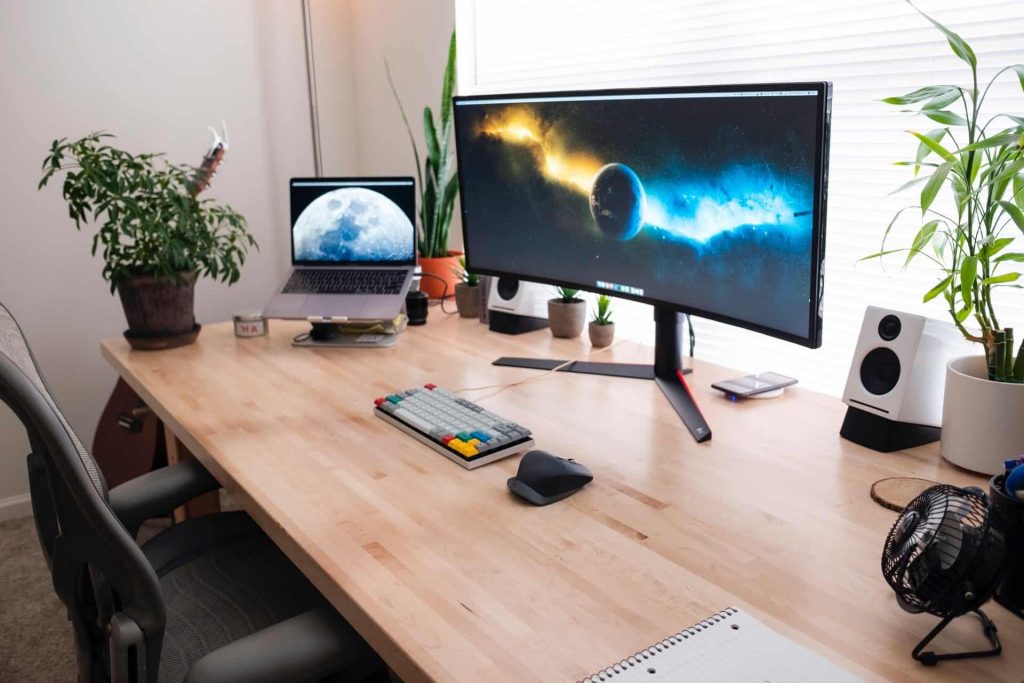
The very foundation of any ergonomic workspace lies in how and where you position your monitors. Think of this as setting the tone for everything else—get this part right, and the rest becomes easier to manage.
Your primary monitor, or the screen you use most often, should be directly in front of you so your head doesn’t need to rotate constantly. Make sure not to place the two screens close to one another or too close to you — this is essential for reducing strain and promoting long-term spinal alignment.
Your eyes should meet the top third of the screen when you’re sitting or standing upright with your head in a neutral position. This allows your eyes to naturally scan down without having to tilt your head.
If you use both multiple monitors equally, place them side by side and angle them slightly inward, creating a soft curve that mimics your field of vision. This simple adjustment can save your neck and eyes from repetitive twisting and focusing fatigue.
The golden rule here? Avoid twisting your torso or neck just to see what’s on the secondary screen. Keep everything within a comfortable visual arc.
Tip 2: Keep Both Screens at the Same Height and Distance
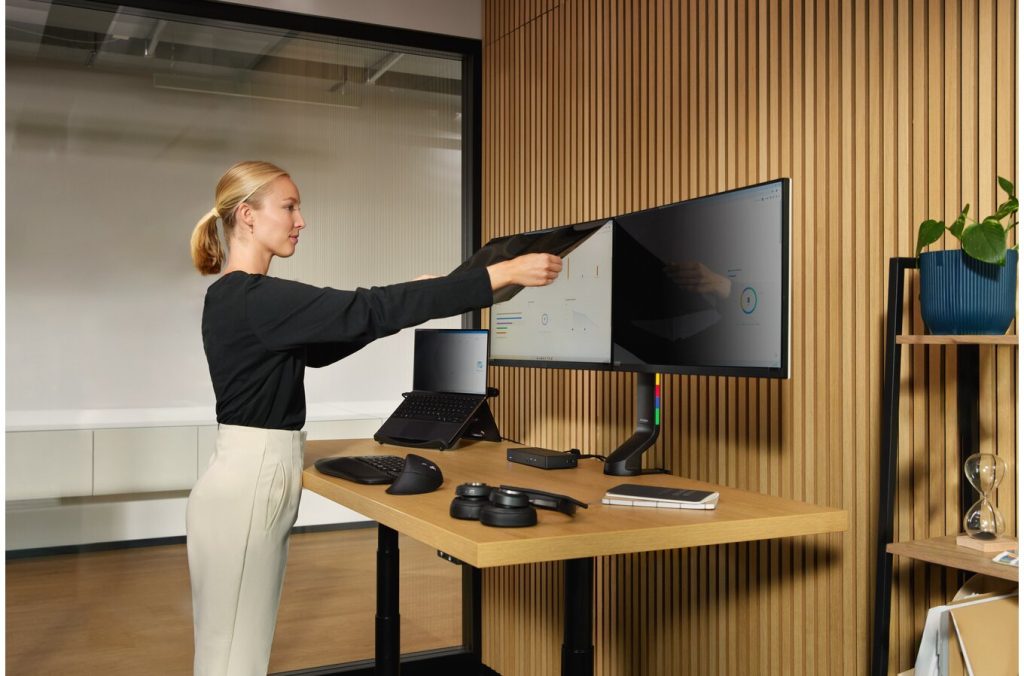
This might seem like a small detail, but your eyes and neck will absolutely notice if one is even slightly higher or farther away than the other. Misalignment, even by a couple of inches, can force you into unnatural positions all day long, and that adds up.
To avoid this, both monitors should be set at identical height and distance, roughly an arm’s length away. This reduces strain in the eyes and keeps your head movements minimal and balanced. Remember, every extra movement you make is more effort you need to recover from later.
For users who include a laptop in their dual monitor setup, a laptop stand or riser is non-negotiable. It brings your monitor up to match the level of your primary display, eliminating awkward downward angles that can stress your cervical spine.
Tip 3: Tweak Tilt, Lighting, and Glare

Even if your monitors are at the right height and distance, you’re not done yet. Angling and lighting play a massive role in keeping your eyes and upper body comfortable.
Your dual monitor should be tilted back between 10 and 20 degrees, just enough to match the natural downward gaze of your eyes. This keeps you from hunching over or craning back.
Trust us, the tilting and height of your monitors play a major role in ergonomics. If your screen’s tilted forward, you’ll unconsciously lean in. If it’s too far back, you’ll be fighting glare and reflection.
Speaking of glare, be mindful of your lighting setup. Place multiple monitors perpendicular to windows whenever possible to avoid harsh backlight or glare. Use soft, indirect task lighting rather than harsh overhead lights, and tweak your monitor’s brightness to complement the room’s lighting, not compete with it.
If you still struggle with reflections, consider anti-glare filters or monitor hoods, especially in naturally bright spaces. Your eyes will thank you.
Additionally, you can change the lighting of your monitors by tweaking the settings in the System Preferences of your computer. You can even change up the font size and other display settings of your computer here.
Tip 4: Embrace the Flexibility of Monitor Arms
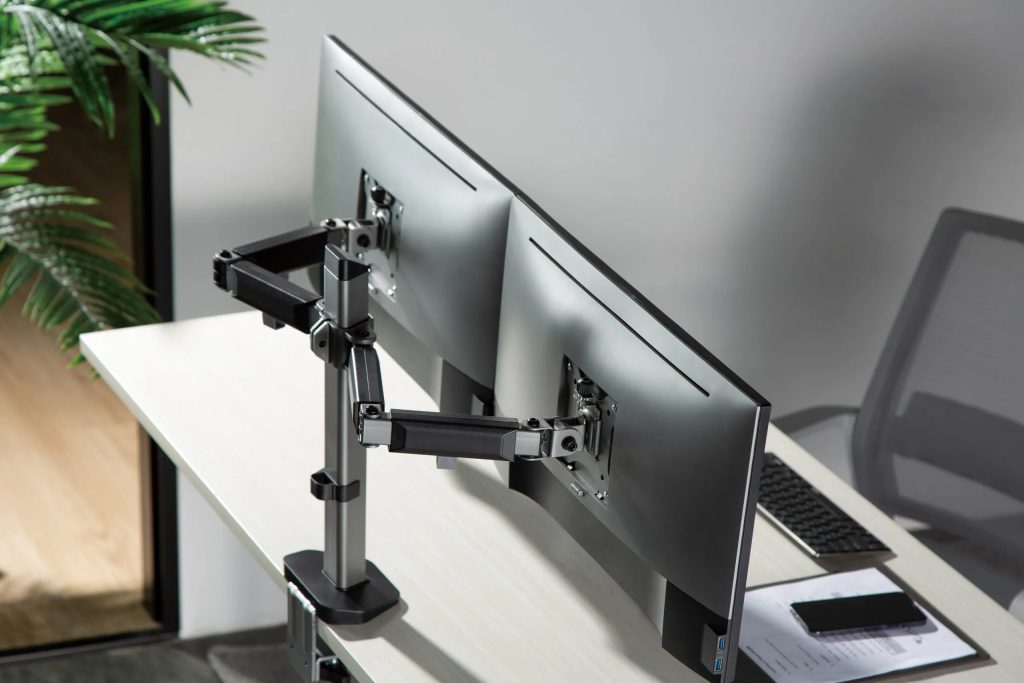
One of the most impactful additions to an ergonomic workstation is the arm, a tool that provides freedom of movement and unparalleled adjustability.
These allow you to effortlessly tweak the height, angle, and depth of your screens as your posture shifts throughout the day. Whether you’re seated down, standing, or leaning back for a Zoom call, you can reposition your screens in seconds, keeping your spine aligned and your viewing angles ideal.
This flexibility is a game-changer for those using sit-stand desks or shared workspaces. Plus, monitor arms free up your desk by lifting the screens off the surface, giving you extra room for notebooks, a clean coffee setup, or just a little visual breathing space.
A good monitor arm isn’t just about aesthetics—it’s a functional investment in long-term comfort and posture.
Tip 5: Cable Management – A Cleaner Desk is a Healthier Desk
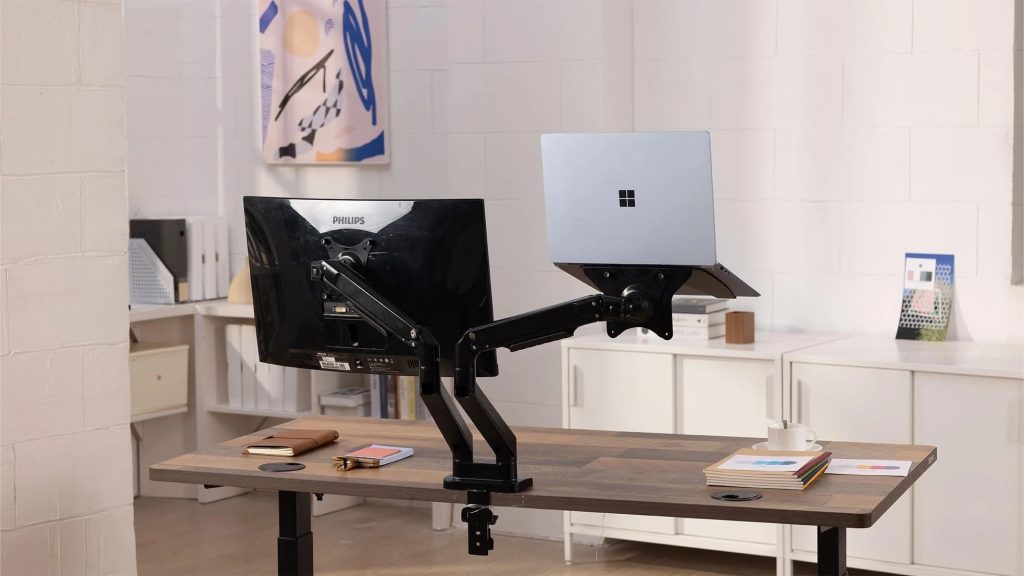
We often overlook the effect of clutter on comfort, but a chaotic cable mess can restrict your movement and make you hesitant to tweak your setup throughout the day.
When it comes to ergonomics, freedom of motion matters. Use cable sleeves, zip ties, or built-in cable management systems on your monitor arms to secure your cords neatly. Route everything down the arms or behind the desk to keep your workspace clean and flexible.
Tidy cables won’t just reduce visual stress—they make it easier to retain proper positioning, especially if you’re making frequent adjustments to your monitors. And let’s face it: a clean workspace just feels better to work in.
Tip 6: Optimize Keyboard and Mouse Positioning
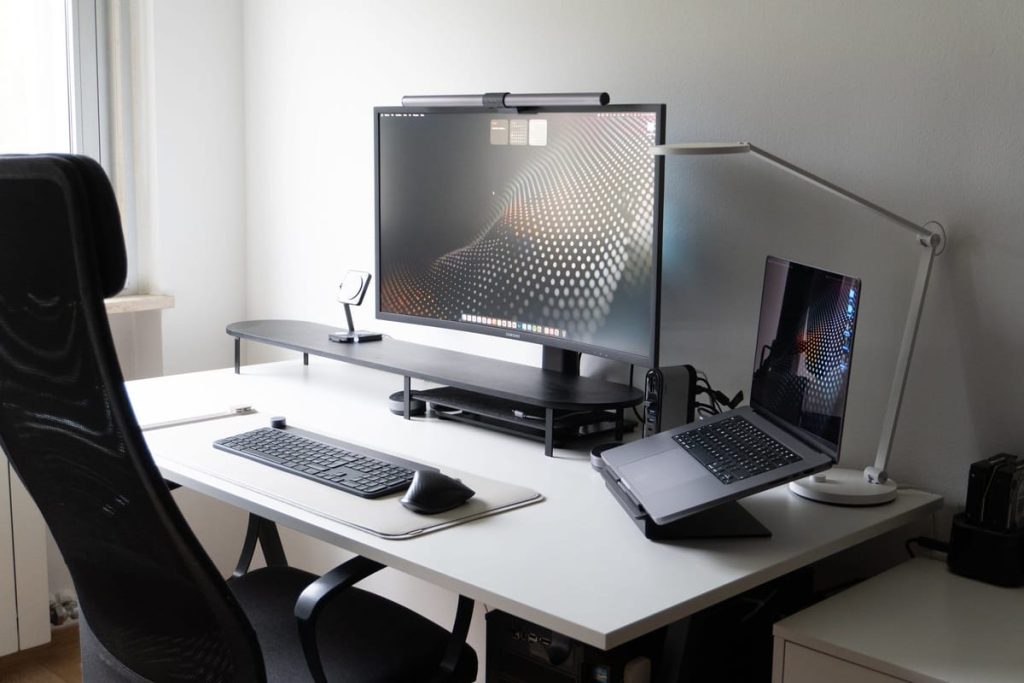
Your monitor setup is crucial, but your keyboard and mouse positioning are the glue that holds ergonomic alignment together. The wrong placement of both the keyboard and mouse can sabotage even the best screen setup, so it’s best to keep in mind their ergonomics.
Place your keyboard directly in front of your primary monitor, and your mouse should sit right beside it. Your elbows should rest at a comfortable 90-degree angle, and your wrists should remain flat or slightly elevated. Wrist strain, shoulder fatigue, and even carpal tunnel symptoms can develop if you’re overreaching or angling your arms awkwardly all day.
Consider using a keyboard tray to bring your hands into the ideal ergonomic zone—especially helpful if your desk is on the taller side. If you’re using ergonomic or split keyboards, keep them aligned with your primary computer screen and body to avoid twisting at the waist.
Final Note
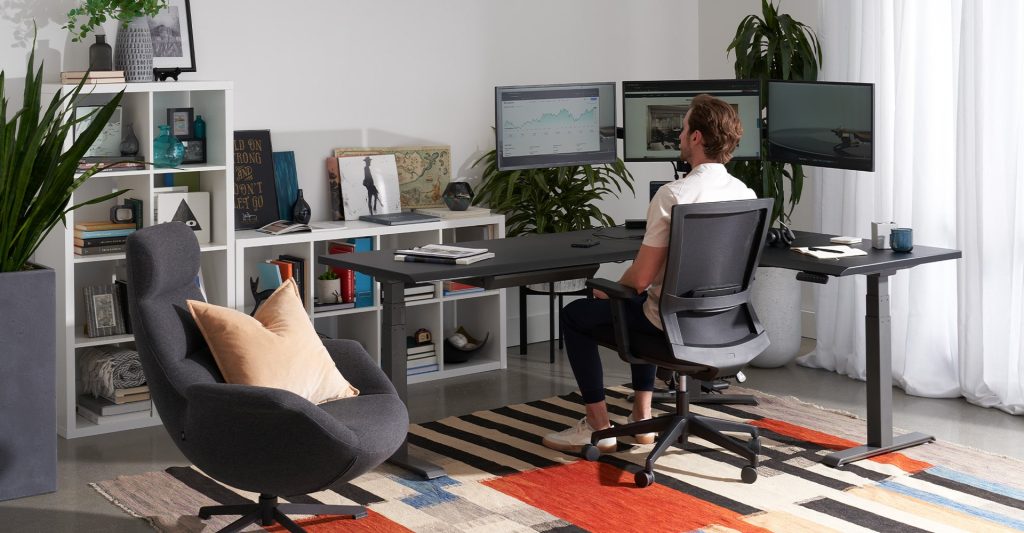
Setting up dual monitors with proper ergonomics is about more than just comfort—it’s about enhancing productivity, reducing the risk of injury, and creating a workspace that supports your goals. Whether you’re working with two displays full-time or occasionally glancing at two screens, these small changes go a long way in improving your daily experience.
Frequently Asked Questions
What is the most ergonomic way to have two monitors?
The most ergonomic way to set up two monitors starts with aligning your main screen—the primary screen right in front of you—so your body doesn’t have to rotate constantly to view your central tasks. This ergonomic setup ensures that your posture remains neutral and balanced throughout the workday.
If you’re working with dual monitors but mostly use one, keeping your main display centered helps maintain natural neck alignment. You should only slightly turn to glance at your secondary monitor, which can be positioned just to the side of the main screen.
Now, if you use both equally—say, for coding on one and referencing documents on the other—the best position is to arrange your dual monitors in a layout forming a slight V, forming a subtle circle around your seated or standing desk position. This places both screens within your full range of natural vision, helping to reduce eye strain and minimize the risk of developing neck and eye strain over long periods.
Both monitors should be at eye level, so your eyes hit the top third of each monitor when you’re seated down or standing upright. This allows your gaze to naturally drop slightly without the need to tilt. The displays should be about an arm’s length away from your face to help you focus without leaning forward, which is crucial for spinal alignment and eye health.
For maximum comfort and flexibility, using a dual monitor arm is ideal. It allows you to easily tweak the height, tilt, and distance of each monitor to match your posture throughout the day.
This is especially useful when switching between sitting and standing if you use a standing desk, or when multiple people share the same desktop. The monitor arms also provide space-saving benefits by freeing up your desktop surface, letting you keep your work area uncluttered and efficient.
Whether you’re pairing a laptop with an external display or using two full-sized screens, matching their height and distance—and keeping them within your natural range of vision—is the best way to support long-term health and sustained productivity.
How to make dual monitors look good?
An aesthetically pleasing monitor setup enhances focus and keeps distractions low. Use monitor stands for a clean, floating look and pair them with smart management of cables to eliminate desk clutter.
Match the screen sizes if possible, and modify your system’s preferences to align brightness, resolution, and font size for consistency across displays. Add a minimalist desktop wallpaper that spans both screens, and you’ve got a setup that looks as good as it feels to use.
How deep should a desk be for 2 monitors or dual monitors?
A proper desk for two monitors should be at least 24 inches deep to ensure a comfortable viewing distance and allow space for a full keyboard. Ideally, aim for 30 inches if you also plan to include an arm or a standing desk converter. This depth ensures both screens stay at an optimal viewing distance and leaves enough room for adjustments without feeling cramped.
How to scale up from one screen to multiple monitors?
If you’re moving from one monitor to dual monitors or even more, it’s vital to rethink how you arrange your space. Your goal is to make them feel like a single, cohesive workspace inside the office or your office at home. That means lining up the top edges of your monitors, minimizing gaps between them, and ensuring each display is within your peripheral vision.
When this is done well, your brain adjusts more naturally, and your work feels more fluid. This smooth transition can significantly boost your workflow and reduce the cognitive load of managing several tasks at once.
How do I adjust my dual monitors or secondary screen if I have multiple windows in my room?
When setting up dual monitors in a room with windows, lighting becomes just as important as screen placement. Natural light from your windows can boost your mood and productivity, but it can also cause glare on your displays if your setup isn’t properly aligned. The key is to work with the windows, not against them, while creating an ergonomic and visually comfortable space.
Start by positioning your desk and dual monitors perpendicular to the window. This helps reduce direct glare and prevents light from reflecting off the computer monitor into your eyes. If your monitors face the window, the bright background can cause strain as your eyes struggle to adjust between the bright light and the dimmer screen.
On the other hand, if the windows are directly behind you, light can bounce off your screens and wash out the display. Either scenario makes it difficult to look at your screen and could reduce your overall productivity.
Adjust your windows with blinds or light-diffusing curtains to soften the brightness without eliminating natural light entirely. This gives you control over the environment without sacrificing visibility.
If you’re using a standing desk, make sure it doesn’t block the natural flow of light when it’s raised. Whether seated down or standing up, ensure both screens are angled to avoid catching too much direct sunlight.
For dual monitors specifically, align both displays to receive similar lighting conditions. You don’t want one screen to appear brighter or more reflective than the other, as that inconsistency forces your eyes to constantly readjust. This is especially important if you often split windows between the two monitors or drag content across them.
To keep lighting even, you might consider adding a desk lamp with adjustable brightness and color temperature to supplement natural light during cloudy days or evening hours, as the view and light coming from your windows might get dark.
Finally, check your system preferences and adjust each display’s brightness individually to match ambient conditions. On some computers, especially when using multiple displays, you can set auto-brightness based on room lighting to reduce strain and maintain a consistent viewing experience.
By thoughtfully adjusting your computers and dual-monitor setup in relation to your windows, you’ll strike the perfect balance between natural light, screen visibility, and ergonomic comfort.
